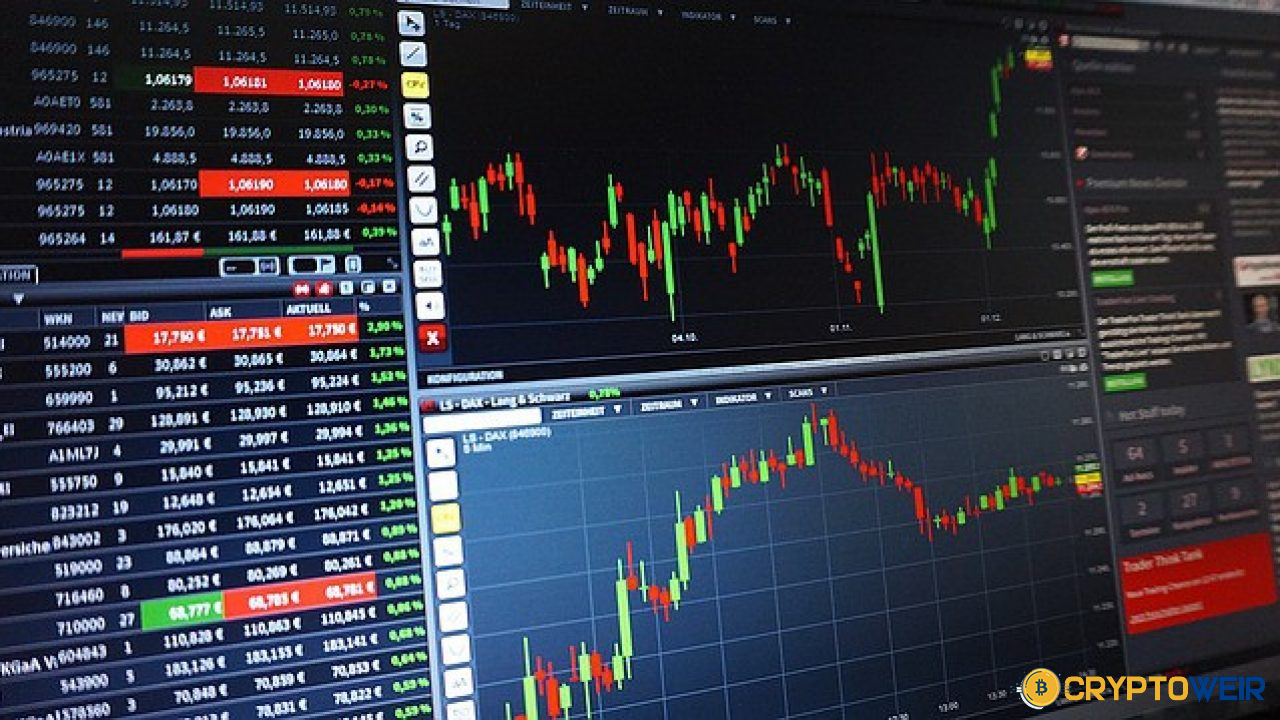Bitcoin & Crypto Moves After U.S. Inflation Report
How far could Bitcoin, Ether, XRP, and Solana move after the U.S. inflation report? Explore scenarios, volatility, levels, and strategy in plain English.

Why U.S. Inflation Data Hits Crypto So Hard
When the U.S. inflation report surprises, it moves the bond market first. Bond yields influence the cost of capital, risk appetite, and the relative attractiveness of growth assets. Crypto sits at the high-beta end of that spectrum. If inflation comes in lower than expected, markets tend to price easier monetary conditions, looser financial conditions, and a more supportive backdrop for Bitcoin and Ether. The reverse is also true: a hotter report can push yields higher and compress valuations for risk assets, often sparking a quick drawdown in XRP and Solana alongside the majors.
The Macro Transmission Mechanism
At a high level, the chain looks like this: Inflation → Fed expectations → Bond yields and dollar → Liquidity conditions → Risk assets → Crypto. A cooler CPI can lower expectations for rate hikes or accelerate expectations for cuts, easing real yields and lifting growth-sensitive assets. The U.S. dollar often weakens in that scenario, which historically correlates with Bitcoin strength. A hotter CPI hardens the path of restrictive policy, supports the dollar, and pressures speculative corners of the market, where altcoins frequently underperform.
Why Crypto Reacts Faster Than Equities

Crypto trades around the clock, with deep derivatives markets and a global participant base. That means volatility is reflexive: as prices jump, forced covering and liquidations can amplify the move. The absence of standard circuit breakers, thinner off-peak liquidity, and concentrated order books on certain exchanges can turn a 1% macro surprise into a 5%–15% hourly swing in BTC, ETH, XRP, or SOL. In short, crypto’s market structure magnifies macro.
What “Much Could Move” Really Means: Framing the Ranges
No one can predict the exact number before it’s released, but we can map realistic ranges based on recent behavior around macro prints, crypto options pricing, and liquidity depth.
Reading Implied Volatility Around CPI
Options markets provide a forward-looking view of expected movement. In the days leading up to CPI, implied volatility on Bitcoin and Ether options often drifts higher, pricing a “gap risk” at the release time. While prints vary, it’s common for BTC to see a 24-hour realized move that’s roughly in line with the pre-event implied move. Translating that into directional ranges:
-
A mild surprise in CPI—one or two tenths below or above consensus—has historically aligned with BTC moves in the 2%–5% range within hours, and 3%–8% over 24–48 hours as positioning resets.
-
A significant surprise—three tenths or more—can push BTC closer to 6%–12% in the first session, with ETH sometimes stretching to 7%–14% depending on liquidity and leverage.
-
Altcoins like XRP and SOL often exhibit beta values greater than one relative to BTC. Translating: if BTC swings 6%, SOL might swing 8%–15%, and XRP 7%–12%, given typical liquidity profiles and derivatives skew.
These are descriptive ranges, not promises. Still, they provide a valuable framework for “how much could move” after the U.S. inflation report lands.
Bitcoin (BTC): The Anchor That Sets the Tone
Bitcoin remains the market’s anchor. Liquidity is deepest, options are most developed, and macro funds tend to express crypto views through BTC first. As a result, the initial impulse after CPI often starts with Bitcoin and then radiates outward.
Bullish CPI Surprise: Cooler-Than-Expected Inflation
A cooler print can lower real yields and the dollar, lifting BTC as macro funds add risk. In this setup, a swift reclaim of recent resistance often triggers momentum flows. If heavy short interest builds up into the release, a short squeeze can extend the rally. Watch for tight, shallow pullbacks on rising open interest and funding flipping favorable but not extreme—conditions that often indicate sustainable trend continuation. In these environments, Bitcoin dominance sometimes initially rises, as capital first flows into BTC before rotating into ETH and altcoins.
Bearish CPI Surprise: Hotter-Than-Expected Inflation
A hot print can quickly unwind risk exposure. Spreads widen, bids disappear, and cascading liquidations drive wick-y candles lower. If BTC loses a key moving average or a volume-weighted anchor from a recent swing low, downside can extend as dealers and hedgers chase delta. The practical effect: even if the medium-term thesis remains constructive, the immediate aftermath can be 5% to -10% in BTC with intraday spikes. Seasoned traders watch cumulative volume delta (CVD) and options skew for signs of capitulation or stabilization.
Ether (ETH): Rate-Sensitive, Plus Its Own Catalysts
Ether is both macro-sensitive and uniquely driven by ecosystem factors—staking dynamics, L2 activity, and narrative shifts around DeFi and restaking. This two-engine setup can amplify CPI-day moves when macro momentum aligns with positive on-chain flows.
What Makes ETH React Differently Than BTC
Compared to Bitcoin, ETH often carries a richer implied volatility surface and a more retail-driven options mix around event days. If CPI is dovish for risk assets, ETH can outperform BTC as traders seek higher beta and as DeFi TVL, gas usage, or rollup activity trend higher. Conversely, in a hawkish shock, ETH sometimes underperforms BTC due to its broader risk profile and thinner liquidity during off-peak hours.
Realistic Post-Report Ranges for ETH
Using the same descriptive lens, ETH can reasonably swing 3%–8% on a mild surprise and 7%–14% on a large one over the first 24–48 hours. In practice, ranges compress or expand depending on pre-event positioning. If the market ran hot into CPI, upside might be capped as longs take profit; if positioning was cautious, there’s more “air” above price to rally into.
XRP: Liquidity Pockets and Headline Sensitivity
XRP reacts to macro, but its unique liquidity venues and a history of legal/regulatory headlines create idiosyncratic volatility. Order books can thin out quickly during macro shocks, turning what looks like a slight miss in CPI into a larger percentage move on XRP.
How CPI Filters Into XRP’s Market Structure
When CPI surprises, market makers widen spreads and reduce size at the top of the book. On XRP, this sometimes produces air pockets—zones where price moves quickly because there aren’t many resting orders. If the initial Bitcoin move is strong, XRP often follows with a lag, then overshoots as momentum traders pile in. This lag-and-overshoot pattern is classic in altcoins that track BTC beta but have uneven depth.
Realistic Post-Report Ranges for XRP
On milder surprises, XRP might move 3%–7% fairly quickly, with 6%–12% feasible in larger shocks. If liquidations fire on perpetual swaps, wicks can exceed those bands intraday before the price settles. The key is whether the initial impulse sees follow-through—higher highs on rising volume—or stalls near prior resistance, where sellers reappear.
Solana (SOL): High Beta, High Throughput, High Volatility
Solana has become a core high-beta play in crypto cycles. Its high throughput and vibrant ecosystem attract momentum capital during favorable macro winds—and see sharp outflows when the wind shifts.
Why SOL Often Overshoots
SOL tends to display beta > 1 to BTC and ETH, especially on event-driven days like the U.S. inflation report. A dovish CPI can ignite a rotation into SOL as traders seek bigger percentage gains, particularly if ecosystem catalysts or liquid staking flows are positive. Conversely, a hawkish surprise can see SOL retrace harder because leverage is more prevalent and order books can unfill faster.
Realistic Post-Report Ranges for SOL
A mild CPI surprise typically maps to a 4%–9% move in SOL over the first day or two. A larger shock can stretch things to 9%–16%, especially if derivatives positioning is one-sided. In either scenario, SOL often paints long wicks; patient entries and exits tend to fare better than chasing candles in the first minutes.
Scenarios: Cooler, Inline, or Hotter CPI
To translate macro into expected movement, it’s helpful to think in three buckets. None is a certainty, but each gives you a playbook.
Scenario 1: Cooler-Than-Expected CPI (Dovish Surprise)
A softer print reduces immediate rate pressure, which typically supports risk assets and crypto. Expect BTC to lead with +3%–8%, ETH with +4%–10%, XRP with +5%–10%, and SOL with +6%–12% over the following sessions, assuming positioning wasn’t already stretched. Watch the U.S. dollar and real yields; if both dip, the tailwind strengthens. Bitcoin dominance may tick higher first before altcoin rotation accelerates as confidence builds.
Scenario 2: Inline CPI (No Surprises)
When CPI lands near consensus, the knee-jerk move might be smaller, but that doesn’t mean flat markets. Traders are still reassessing probabilities for the next Fed meeting, and pre-positioned flows are unwinding. Expect choppier ranges: BTC in ±2%–4%, ETH in ±3%–5%, XRP in ±3%–6%, and SOL in ±4%–7%. Macro takes a back seat, and crypto-native narratives—layer-2 adoption, restaking yields, DeFi TVL, and ecosystem upgrades—regain influence.
Scenario 3: Hotter-Than-Expected CPI (Hawkish Surprise)
A hotter report can send yields up and risk assets down. Expect defensive behavior: BTC -3%–10%, ETH -4%–12%, XRP -5%–11%, and SOL -7%–15% in the first sessions, with the exact path shaped by liquidations and the speed of bid reappearances. If the U.S. dollar breaks higher on the print, the headwind can persist beyond the first day. In this regime, strong intraday bounces can occur but may fade at resistance unless macro data later offsets the shock.
How To Prepare A Practical, Readable Checklist
This isn’t about calling the number—it’s about managing probabilities and risk when the U.S. inflation report hits.
Know the Consensus and the Bands
Before the release, understand the consensus CPI figure and the typical forecast band. Markets respond not to the absolute number but to the surprise versus expectations. If consensus is clustered and the miss beats the widest credible estimates, the move can be outsized because few participants hedged that tail.
Read the Market’s “Tell” in Derivatives
Check funding rates, open interest, and front-end implied volatility. Elevated funding with rising OI into the print can signal vulnerability to a flush on a hot CPI. Depressed funding and low IV can mean a larger move if the surprise is dovish. The skew between puts and calls near the event window hints at which tail the market is paying up to protect.
Respect Liquidity Pockets and “First Move, Best Move”
On event days, liquidity can be deceptive. The first move often sets the direction, but fake-outs happen when algos overextend and larger players fade them. Instead of chasing the initial candle, many disciplined traders wait for a retest of the breakout level or a failed retest that confirms a fade. Watching the footprint—volumes at price and how quickly order books refill—offers more signal than social media hype.
Coin-by-Coin Lenses: What Matters Right Now

Each asset carries its own set of LSI keywords and drivers that either amplify or dampen CPI’s impact. Below are focused lenses to help you think like a pro without over-optimizing your strategy.
Bitcoin: Liquidity, Real Yields, and Dominance
Bitcoin trades like a macro instrument. When real yields fall, BTC often enjoys a tailwind. Bitcoin dominance tends to rise during risk-off phases and flatten or decline during risk-on phases as capital rotates down the risk curve. On CPI day, if BTC breaks above a widely watched resistance on heavy volume and real yields are falling, the path of least resistance may be higher.
Ether: Staking, L2 Throughput, and DeFi Velocity
Ether responds to macro, but on-chain velocity matters. Elevated staking participation, healthy L2 throughput, and rising DeFi total value locked support a medium-term bullish case that can supercharge a dovish CPI response. Conversely, if gas fees spike for the wrong reasons or TVL drains, a hot CPI can hit ETH harder than BTC.
XRP: Liquidity Venues and Narrative Heat
For XRP, the narrative temperature—exchange listings, legal clarity developments, and cross-border payments adoption—can either cushion or intensify CPI-driven moves. If narrative heat is high and liquidity is broad, XRP can catch sustained follow-through after a dovish surprise; if narrative heat is low, slippage risk rises.
Solana: Ecosystem Flywheel and Leverage
Solana’s ecosystem—DeFi, NFTs, DePIN, and high-performance applications—creates a flywheel when macro is supportive. But high leverage and concentrated positions can turn hawkish CPI days into sharp drawdowns. Reading perpetual funding and large liquidation clusters on SOL can prevent chasing the wrong side.
Risk Management: Protecting Capital on CPI Day
Good outcomes start with defensive planning.
Position Sizing and Asymmetric Risk
Size positions so a wrong-way move doesn’t impair your ability to trade tomorrow. If you’re trading into CPI, dial down your dial sizes and accept that slippage and gap risk will rise. For many, it’s better to enter after the first impulse and retest, even if the resulting trade has less theoretical “edge.”
Hedging With Options
If you’re comfortable with derivatives, short-dated puts can hedge long spot exposure, while call spreads can express upside views with limited premium. Around CPI, implied vols are higher, so hedges cost more—but so do mistakes.
Time Horizons and Emotional Discipline
If your horizon is months or years, CPI is noise embedded in a macro cycle. For traders, it’s a tactical opportunity. Decide which you are before the number hits. Emotional decision-making—averaging down without a plan or chasing rips—usually shows up as drawdowns in your P&L.
How Much Could They Move—Putting It All Together
Let’s condense the moving parts into an actionable framework you can reuse each month:
-
Start with consensus CPI and the surprise bands.
-
Check rates, dollars, and equity futures for cross-asset confirmation.
-
Read crypto derivatives: funding, OI, skew, and front-end IV.
-
Map BTC and ETH ranges first; use them to scale expectations for XRP and SOL.
-
Respect liquidity and avoid the first whipsaw unless your system is built for it.
-
Use risk management that fits your timeframe.
With this approach, you won’t need to predict the exact number. You’ll be prepared to respond—calmly, consistently, and with a process that compounds over time.
Conclusion
The U.S. inflation report is one of the few recurring data prints that can reprice crypto in seconds. Because inflation shapes rates and rates shape liquidity, Bitcoin, Ether, XRP, and Solana often experience meaningful moves immediately after the release. While the precise impact depends on the surprise vs. expectations and the market’s pre-positioning, framing the day with realistic ranges, derivatives reads, and disciplined risk management can turn volatility into opportunity. Whether you are an investor riding multi-quarter trends or a trader hunting event-driven edges, the blueprint remains the same: prepare, don’t predict; manage risk, don’t chase; and let process—not emotion—drive decisions.
FAQs
Q: How soon after the U.S. inflation report do crypto markets move?
Almost instantly. Liquidity providers and algorithms respond within milliseconds. For most traders, the cleaner entries come after the first minute or two, or on the first retest of a key level, rather than during the initial spike.
Q: Which coin tends to move the most: BTC, ETH, XRP, or SOL?
It varies, but SOL and XRP often show higher beta than BTC and ETH, meaning larger percentage swings for the same macro shock. Still, BTC usually sets the initial direction given its liquidity and macro sensitivity.
Q: Does a softer CPI always mean crypto up, and a hotter CPI always mean crypto down?
Not always. Context matters. If the market already priced a soft number, upside can fade on profit-taking. If positioning was defensive into a hot print, the downside can be shallower. Cross-asset confirmation from rates and the dollar helps validate the move.
Q: How can a long-term investor handle CPI volatility?
Long-term investors often avoid trading the release. Instead, they focus on allocation, cost-averaging, and macro trends. If they hedge, they may use options to smooth portfolio swings rather than attempting to time intraday moves.
Q: What’s the biggest mistake traders make on CPI day?
Chasing the first candle without a plan. Slippage, whipsaws, and liquidation cascades can turn a good thesis into a bad trade. Define entry, invalidation, and take-profit levels in advance, and let the market come to you.
Also Read: Bitcoin vs Ethereum: Which Is the Better Investment









